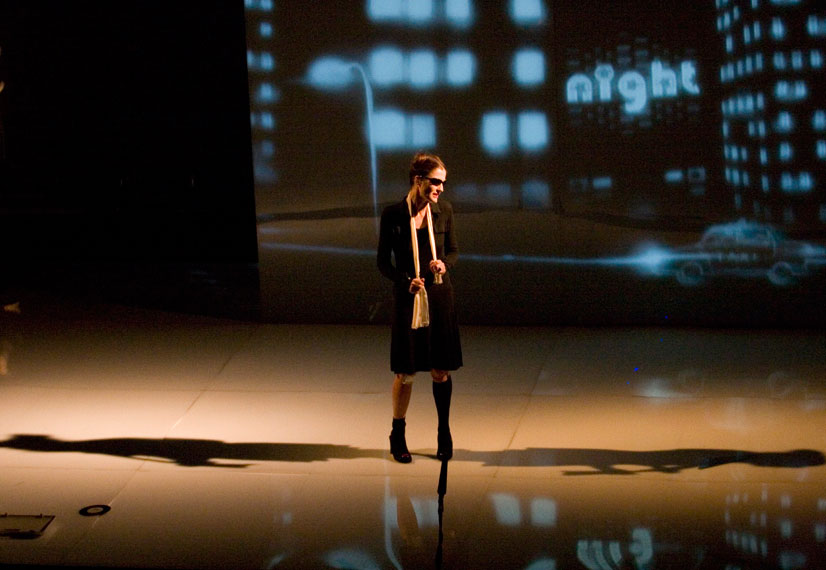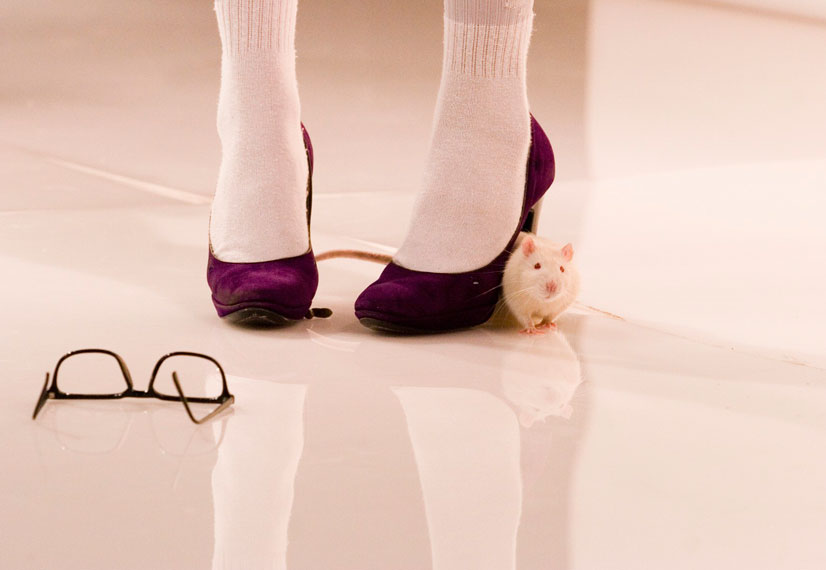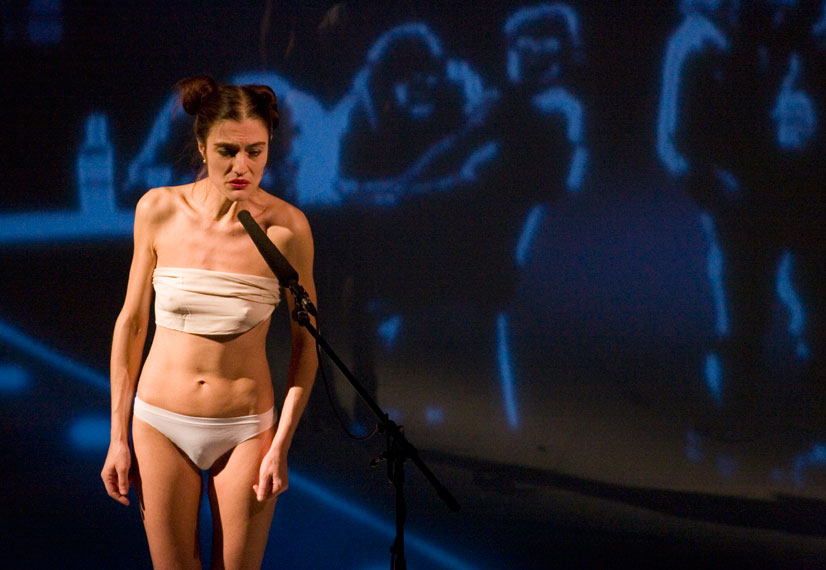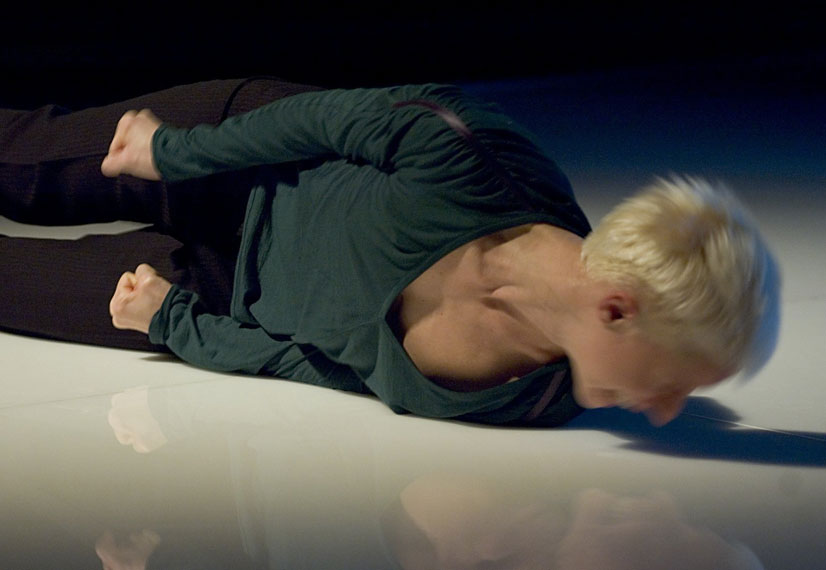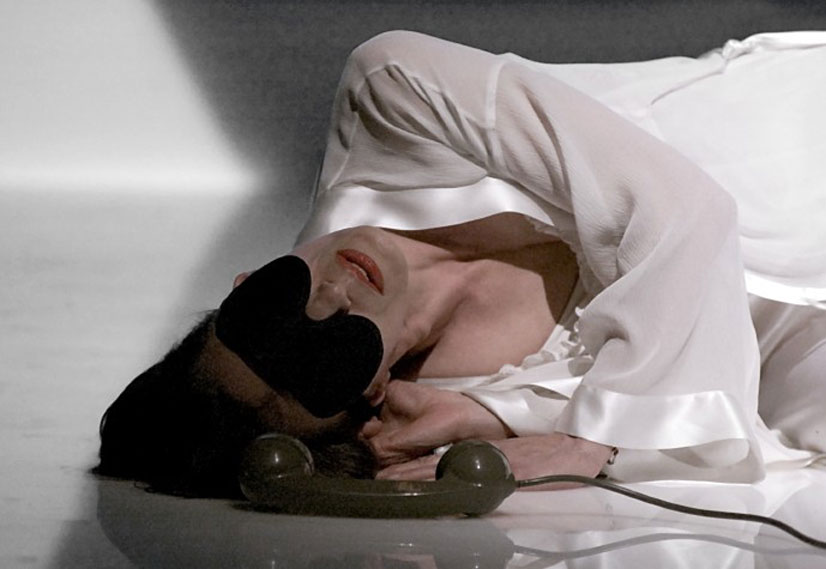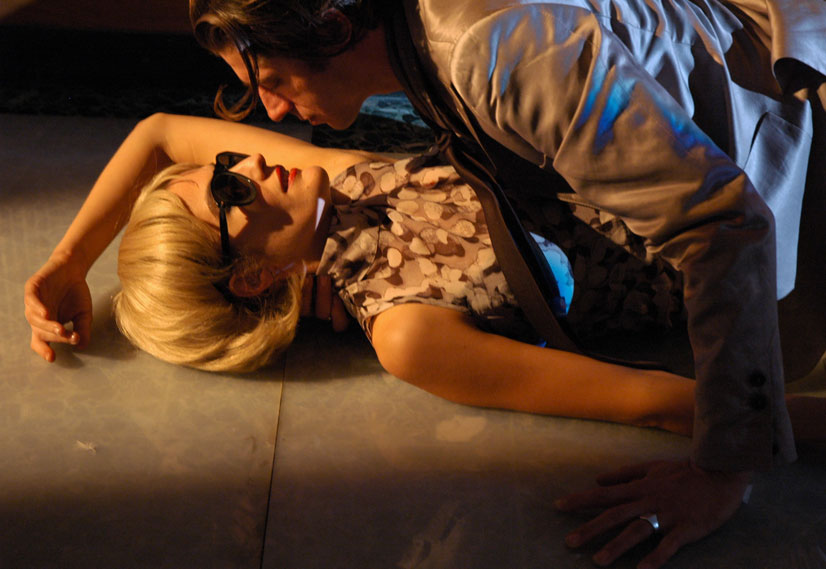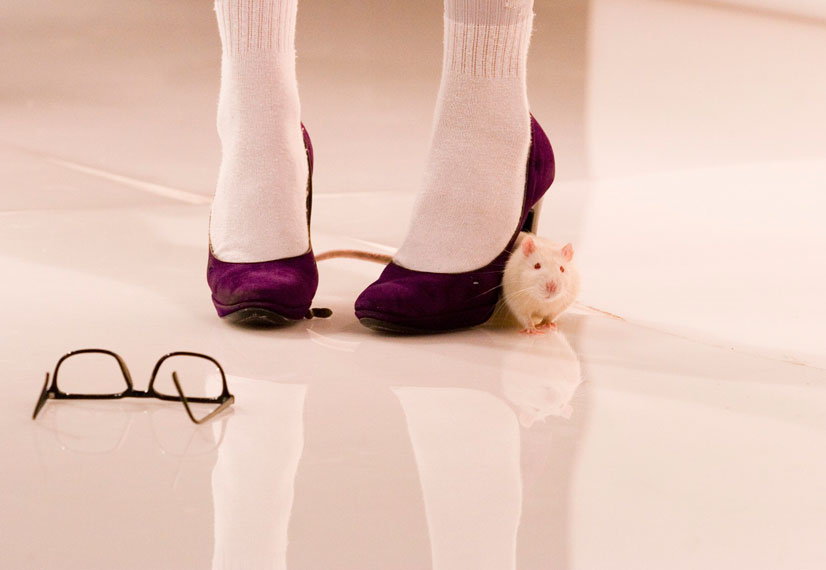
©Valentina Bianchi
Noise and collapse of the melodrama
by Daniela Nicolò
There are plenty of reasons for being pessimistic, but I don’t consider my films to be so. They’re based on the opinion that revolution doesn’t take place on the screen but outside, in the world. When I use the screen to show people why things get worse, my aim is to warn them that this is how things will go if they don’t change their lives.(…) If a film depicts certain mechanisms clearly enough, in such a way as to show how they function, then the final effect is not pessimistic.
Rainer Werner Fassbinder
There’s a singular homonymy in German: the word EINSTELLUNG means both “framing”, in the cinematographic sense, and attitude with regard to any given phenomenon. And by extension also “judgement” in a moral sense… a definition which perfectly “frames” RWF’s cinema, an expressive instrument of the subject-auteur who, in spite of improvisations and boundless criticism, remains anchored to a still “classic” conception of the story, inherited from the modern novel… which the post-modern was soon to overturn …
In his works he observes people and things in the light of principles and values, acting by extremes and polarisations: love is excessive and desperate, the protagonists are nearly always women, the emarginated or homosexuals, and intolerance is of the blindest and fiercest kind. In Fear Eats the Soul we hear, “what’s happiness got to do with it? We’re talking about respectability here!”… At the same time he is always careful not to idealise: all his victims can be transformed, and often are, into equally blind and rigidified slaughterers.
Cynicism, criticism, a taste for citation and metatextual pleasure are voraciously incorporated into the unusual narrative magma of his works where, notwithstanding the superabundance of subplots and characters, everything basically turns on the obsessive dialectic of a two-person exchange, with the infinite variations that result (struggles, betrayals, disappointments, bullying, mourning, contrition, murders)…a universe of strategies of feelings that can be inscribed on a broader and more codified one, that of Douglas Sirk, his master of melodramatic cinema.
It was Sirk that led to his decision to make Hollywood films without Hollywood, pitching the dramas from the perfect living rooms of 1950’s family drama into the blasphemous reality of the disinherited and the different … The classic American melodrama, drawn up on the war of feelings, becomes ideal, privileged territory for staging the elementary functions of the story: love and deceit, wrong emotional choices, feelings dying away with time… the fear of abandonment.
It is therefore the genre which more than any other simulates the order of life,Imitation of Life, precisely, the free zone of reality and everyday obtuseness. It doesn’t explain much about anything but it represents the imaginary discards of the feelings, or better, the blemishes of happiness, regret about unachieved perfection, realisation… and above all it legitimises in a narrative manner the ambivalence and ambiguity that differentiates male and female love (the former almost always permeated by non-choices, the latter by total abandon).
To this boiling and bleeding material RWF adds the multiplication of dyscrasia between public and private powers, the clash between the individual and history… between freedom and the desire to possess things and people… and on these matters Pasolini too – and we ourselves with him – always insisted.
So this dazzling by Sirk lies at the heart of his einstellung: what fascinates him in the films is that they are “… descriptive, there are very few close-ups;(…) the lights are as unnatural as possible, the spectator’s deep feelings are not aroused by the process of identification but rather by the montage and music.” Those films had already abandoned the so called “verisimilitude” that tautologically mirrors an ugly reality in order to trigger a critical process in the spectator, helping him to understand the causes of suffering: the pathos of the melodrama is no longer the object of passive identification but a place of intense feelings of understanding.
Removing yourself from the habitual perception of facts, the fatal and deathly laws of the quotidian eye, this is what “frees the head”, but to do it you have to somewhat distance yourself from the event in order to focus better.
This “distancing”, this cooling of the perception, goes far beyond the “alienation” principle theorised by Bertolt Brecht… “in Brecht you see emotions and your reflect on them while observing, but you never really feel them… I do things in such a way that the spectator feels and thinks…”
(I do things in such a way that the spectator feels and thinks: a little sentence that sums up the essence of what we have always tried to do with our theatre of doubts and overturning, but perhaps only Fassbinder has really succeeded. We keep trying, again and again … )
But let’s get back to RWF: a traditionally “conservative” genre like melodrama, where deviants are always brought back to the established order or come to a tragic end, becomes an instrument for mirroring the tragic consciousness of contemporary society, its ambivalences and especially its voyeurism, amplified by recurrent “optical” filters set between the spectator and what he beholds: all the characters are always framed by windows or doors, reflected in mirrors, obfuscated by curtains or by the moving shadows of phantasmal lamps… there’s a sort of invasiveness of furnishings that overemphasises the isolation of the figures, making the whole representation very “artificial” …
Artificial: this is the most precise word to begin answering the question everyone asks us about Rumore rosa (Pink Noise): “but what is it, what’s it about???”
We could begin by mentioning what is no longer there, or what there should have been but wasn’t: we’d decided to put on a real Fassbinder melodrama (hence the long preamble): The Bitter Tears of Petra Von Kant. We aimed almost at a remake, building an interior with white moquette and elegant sofas… everything seen from the outside, from the windows of Petra’s house: a box filtered by glass and Venetian blinds through which to spy on/distancethe heartrending story of the end of love and the liberation of Marlene…
Due to SIAE rights and power with a capital P we were forbidden to stage the text… rage. Then wisdom. This prohibition, by absurdity, was liberating because we immediately had to shift the perspective, or better, the framing. Furthermore, we’re sure that Fassbinder would prefer unfaithfulness to celebration.
We decided to take a position at the end of the timeline, at the end of Bitter Tears, at the end of Fassbinder, of his own existential melodrama and that of his magnificent actresses, afterwards, post, to represent no longer the “drama” but the artifice which permits it to exist, to present itself as True.
Working towards progressive distancing and simulation we drew up, with the actresses, a kind of shared catalogue-language of all the most recurrent symbols of melodramatic camp, with all the embarrassing ambiguity they contain… phone calls, expectations, parties that end badly, sleepless nights, arguments, betrayals, provocations, blows … accompanying every solitary action with agonizing 45 rpm records from the recent past… Italian songs of love and abandon… the only texts we initially asked to be studied.
The disc turning on its own axis, the needle sticking bewitched at the end with a disturbing click- click: that did the rest. We decided to record, on vinyl, some key dialogues from Bitter Tears as a memory-trace of a text that is no more, that survives only in the remembrances of Marlene, the secretary-servant, mute scrutiniser of facts… words that again evoke expectation-disregard. And above all solitudes.
On disc we also recorded other sounds, footsteps, phone calls, city noises. Everything that was pressed on vinyl automatically became an object, or better, the simulacrum of something based essentially on an absence. On a vacuum. And we proceeded aboard that vacuum.
We started out by getting the actresses to work on their own, with the intention to subsequently intertwine their pseudo-stories: it was impossible. Three single short circuits were grafted, cut separately like grooves in black vinyl.
Black vinyl in white space: at first we thought of furnishings but then thought no. Just microphones, black, and a fan. The white of the Plexiglas had a sort of “hibernating” effect on the three figures, no longer characters but simulations thereof, without feelings yet continually declaring to have them: a death of the affects, spread and reflected without veils, on the mirror-floor.
Their reduction to strip cartoon-icons led us to further accentuate the two-dimensionality of their interrupted psychology by setting a backdrop drawn by a comics artist, which is the only element of continuity in the fragmentation of the feelings. The zooms, the shifting of field between reassuring, oppressive interiors and cold, deserted city exteriors, created a montage of three parallel slivers of life..
In absolute artificiality and at the same time with the impossibility of staging a credible melodrama today, we decided to make the subject explode, to shatter it as if on a smashed windscreen: the car accident, the running down/attempted murder of one of the three characters in this drama-made-sclerotic (maybe Karin?), becomes the one dramaturgical fulcrum, the sole element of collision-confluence of the three stories. An accident which also returns like a loop, which rotates on disc, which is obsessively constructed and deconstructed by an actress (maybe Marlene?) who continually brings in the non-healable fracture between the melodramatic imagination of the origins and the crisis of feelings and stereotypes of the staging. A caesura which Motus bears like an indelible tattoo.
An actress heads towards a car park, car keys in hand (maybe Petra?). Where’s she going? Has she perhaps decided to kill… or to kill herself? A few pieces are missing from the construction, part of the storyboard is still to be filled. Or should it perhaps be down to the spectator to give full meaning to the incomplete curves of simulation?
The actress run down (maybe Karin?) isn’t dead, says she hasn’t been hurt, wants to walk home unassisted, like the child run down in Altman’s Short Cutsor the main character in Jean-Luc Godard’s Sauve qui peut – another impossible melodrama – who lies on the asphalt saying “I don’t feel anything!”…
In the cyclical time of a collapsed representation we come round to Don Delillo’s question which has been persecuting us since 2000: So you, are you a killer or a dying man?



